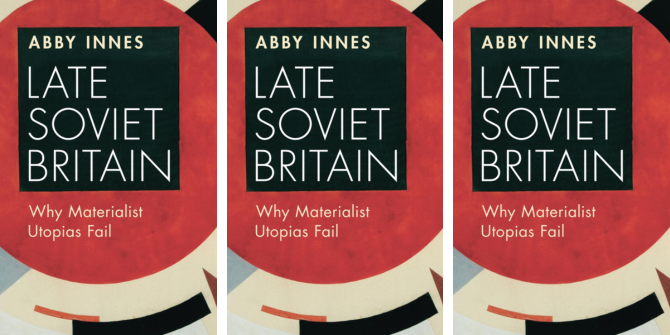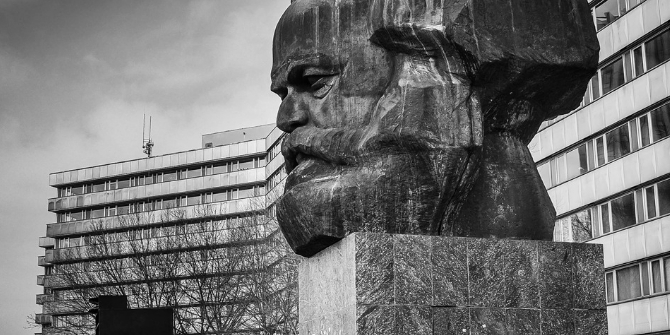In Liberalism Against Itself: Cold War Intellectuals and the Making of Our Times, Samuel Moyn dissects intellectual battles within Cold War liberalism through six key figures: Judith Shklar, Isaiah Berlin, Karl Popper, Gertrude Himmelfarb, Hannah Arendt and Lionel Trilling. Teasing out their complex relationships with Enlightenment ideals, historicism, Freudianism and decolonisation, Moyn’s masterful group biography sheds light on the evolution of liberalism and the cause of the Red Scare, writes Atreyee Majumder.
 In his most recent book, Samuel Moyn provides a set of intertwined intellectual profiles of six scholars of the Cold War, especially post-WWII era: Judith Shklar, Isaiah Berlin, Karl Popper, Gertrude Himmelfarb, Hannah Arendt and Lionel Trilling. Before I read Liberalism Against Itself: Cold War Intellectuals and the Making of Our Times, I had never come across the term Cold War liberalism. As Moyn clarifies, the term was coined in the 1960s by enemies of liberal ideas (presumably from within the Free World) emerging at the time, blaming “domestic compromises and foreign policy mistakes”. Moyn offers an intriguing argument that liberalism arrived at its current iteration through its defenders in the Anglo-American region during the Cold War.
In his most recent book, Samuel Moyn provides a set of intertwined intellectual profiles of six scholars of the Cold War, especially post-WWII era: Judith Shklar, Isaiah Berlin, Karl Popper, Gertrude Himmelfarb, Hannah Arendt and Lionel Trilling. Before I read Liberalism Against Itself: Cold War Intellectuals and the Making of Our Times, I had never come across the term Cold War liberalism. As Moyn clarifies, the term was coined in the 1960s by enemies of liberal ideas (presumably from within the Free World) emerging at the time, blaming “domestic compromises and foreign policy mistakes”. Moyn offers an intriguing argument that liberalism arrived at its current iteration through its defenders in the Anglo-American region during the Cold War.
Moyn offers an intriguing argument that liberalism arrived at its current iteration through its defenders in the Anglo-American region during the Cold War.
Interestingly, all the scholars in Moyn’s study except for Karl Popper are Jewish intellectuals of the post-Holocaust era or are children of American Jewish immigrants. An Austrian émigré in England, Popper was born Jewish but later converted to Lutheranism. Moyn takes great care not to reduce their loyalty to a certain iteration of liberalism to their religious identity (111). He employs an interesting writing strategy whereby he establishes a grapevine of conversations among these six figures and their various compatriot liberals. For instance, Shklar appears as a sharp critic of Hannah Arendt in Chapter five, while Berlin provides a corrective to Shklar’s rejection and blaming of Rousseau for sowing the roots of the red spectre with which the free world was confronted with in the twentieth century.
The first two chapters elaborate on Shklar and Berlin who have divergent attitudes towards the Enlightenment, Romanticism and Rousseau. Both are critical of the Enlightenment to the extent that they find themselves amplifying liberalism’s state-limiting function over its dimension of emphasising creative agency of the individual. They differ on the extent to which the Enlightenment could be held responsible for the rise of the Red Scare. It is in the Karl Popper chapter (Chapter Three) that the plot thickens, as Popper rejects “historicism” by way of rejecting Hegel and his infusion of the idea of progress with Christian “inevitabilism” (77, 80). As Moyn narrates, Popper held that history, if embraced, would mean the inevitable progress as argued for Hegel and later, in Marx’s terms, would lead to a communist version of progress that would usurp liberalism’s dominance. This anxiety made Popper reject the category of history itself. In fact, Jacob Talmon, the “slavish follower” of Popper, described “the idolization of history” as a “nineteenth century novelty” (80).
It is through Hannah Arendt that we see the uncomfortable relationship the Cold War liberals had with the decolonisation movements outside the west
The book reaches a crescendo in the last two chapters on Hannah Arendt and Lionel Trilling, respectively. It is through Hannah Arendt that we see the uncomfortable relationship the Cold War liberals had with the decolonisation movements outside the west; those that claimed the word ”freedom” for colonised populations. As a reader from the postcolony, I found it instructive to read Moyn’s discussion of Arendt’s ambivalence about reconciling her liberalism with the growing liberalisms of the former colonies. In an insightful section at the end of the Arendt chapter (137-8), Moyn discusses how nationalisms of these fledgling nations were objects of suspicion for Arendt and the Cold War liberals while they were eager to embrace the cause of Israel’s nationalism. In the final chapter we witness Lionel Trilling’s strange embrace of Freud’s psychoanalysis, especially Freud’s late work Civilization and its Discontents (1930). Trilling wanted to render a reformed liberalism – one that wasn’t so naïve and shocked at crisis or evil in the world. Moyn writes of Trilling’s use of Freud in working out his own theory of liberty and liberalism (152):
“…..Freudianism affected the theory of liberty. It turns out that people are constrained in the control they can win from the passions, and therefore in the freedom they should have in their self-making. They must use what autonomy they can gain in pitiless struggle with their own proclivities in the service of self-control.”
Trilling’s own treatment of Cold War liberalism […] could have arisen from his repeated attempts to process what he witnessed in Europe in the 1930s as fascism took hold
Trilling’s own treatment of Cold War liberalism, Moyn speculates, could have arisen from his repeated attempts to process what he witnessed in Europe in the 1930s as fascism took hold; Moyn writes that “he rationalized out of it a new liberalism” (153) – a kind of “survivalist” one. Trilling’s move for a reformed and less idealistic liberalism marked liberalism’s slow shift towards the right.
Moyn has written a masterful interconnected intellectual biography of Cold War liberals, unpacking arguments within the liberal establishment about what actually brought about the Red Scare.
Moyn has written a masterful interconnected intellectual biography of Cold War liberals, unpacking arguments within the liberal establishment about what actually brought about the Red Scare. Moyn also makes clear that these figures are not particularly worried about the institutional arrangement that will bring about such actualisation of freedoms and hence, their version of liberalism. Moyn often uses the term neoliberal and I understand that his usage is quite different from the commonplace social science use of that word – which is a political form accompanying the condition of late capitalism. Hence, I would have liked Moyn to delineate his specific use of the term. Moyn does discuss, especially, in the chapter on Hannah Arendt (Chapter Five), the discomfiture of the Cold War liberals with the rise of new nations across the globe, claiming for themselves the political and social goods of liberalism through their own interpretation of what these might entail. He especially mentions, David Scott’s indictment of Arendt for her erasure of Haiti (138). A blind spot about the rest of the world seems to have existed among the Cold War liberals, which Moyn could have explored further. Finally, I was curious about whether Western Marxism – of the Althusser variety (I believe many of them are writing at the same time as Althusser in the 1960s) – were at all in the conversations that the Cold War liberals engaged in. If so, how would they respond to the Althusserian idea that “freedom” as ideology that hides actual class relations in the name of a pleasurable political ideal which thereafter encodes their worlds of desire? Nonetheless, Liberalism Against Itself is an illuminating and, at times, counterintuitive account of the intellectual wars internal to liberal establishment while it was under attack during the Cold War.
Note: This post gives the views of the author, and not the position of the LSE Review of Books blog, or of the London School of Economics and Political Science.
Image credit: DidemA on Shutterstock.







